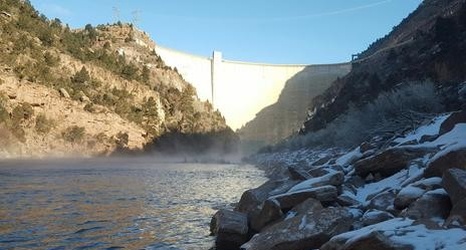Morning and evening routines for families across the West may be contributing to conditions that make survival difficult for aquatic wildlife below hydroelectric dams, according to a recent study co-authored by a Utah State University ecologist.
SALT LAKE CITY — Morning and evening routines for families across the West — powering up kitchen appliances, taking a shower, turning up the thermostat — may contribute to conditions that make survival difficult for aquatic wildlife downstream from hydroelectric dams.
That's the finding of a study co-authored by a Utah State University ecologist and published last week.
The crux of the problem lies in a practice called hydropeaking, where dams release more water than normal to produce more energy during peak hours of the day, usually mornings and evenings.
